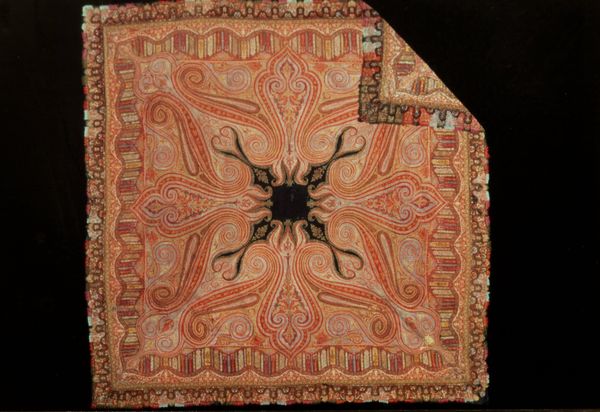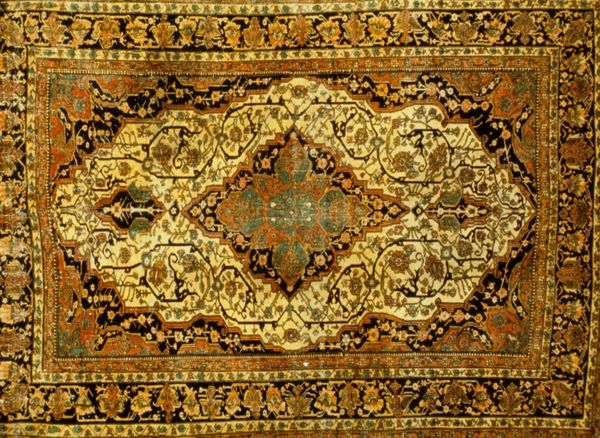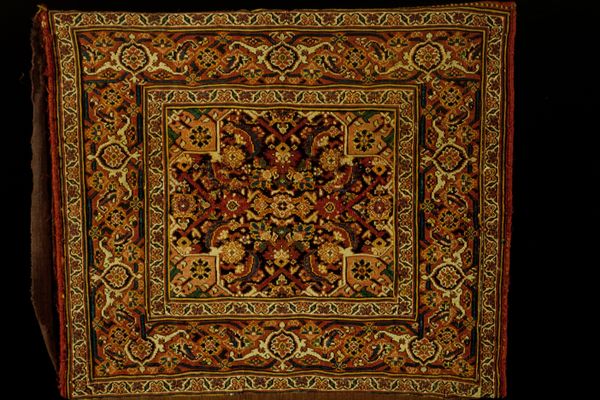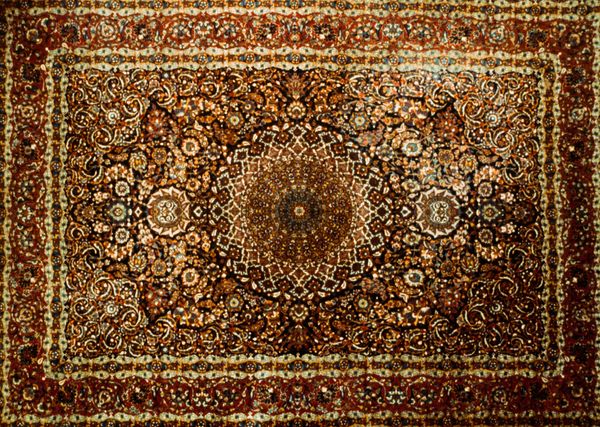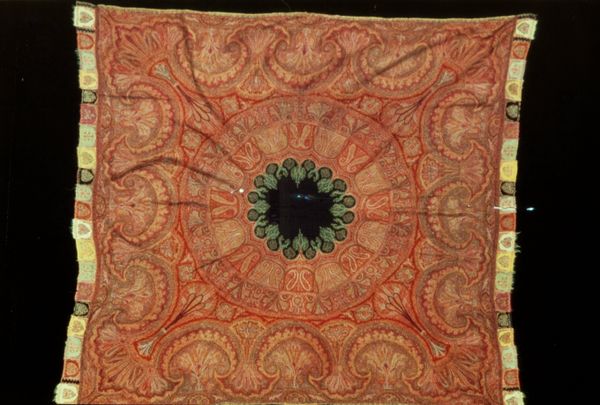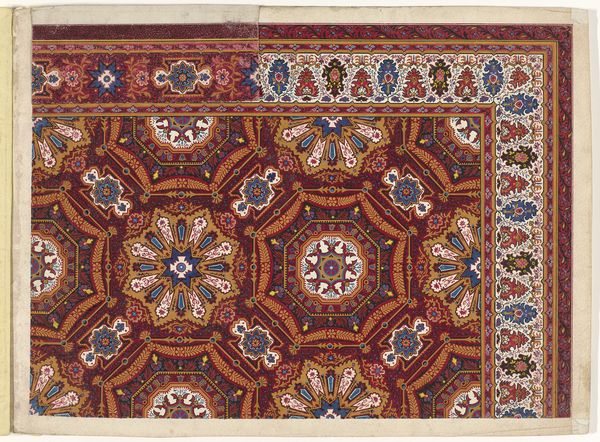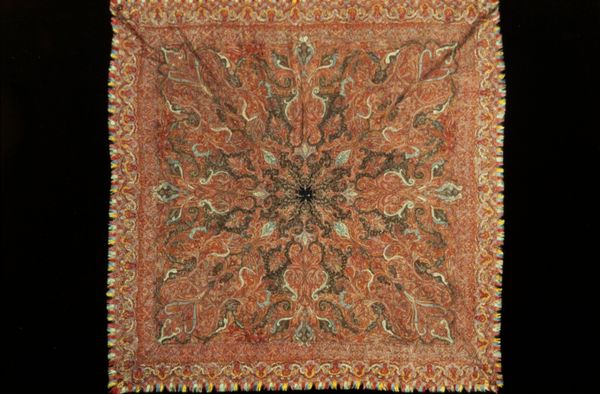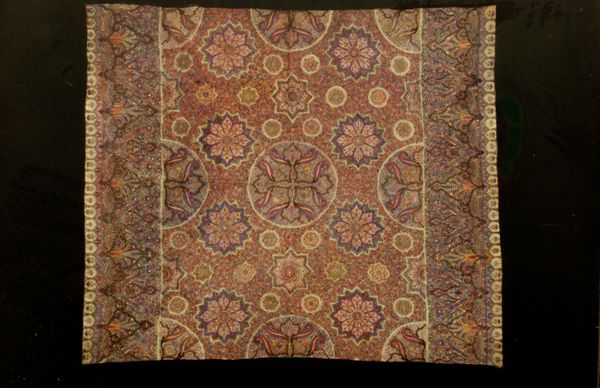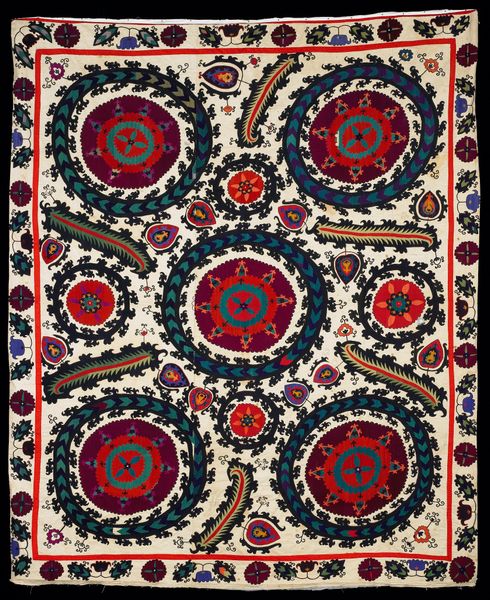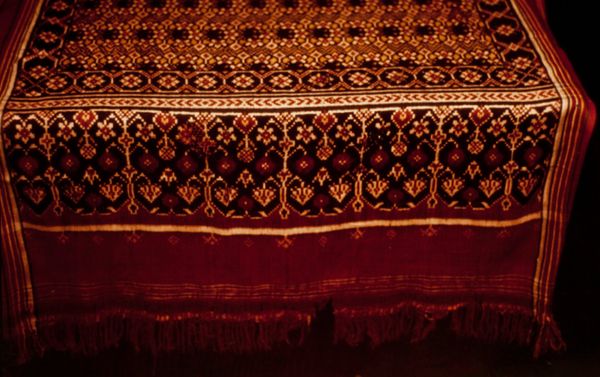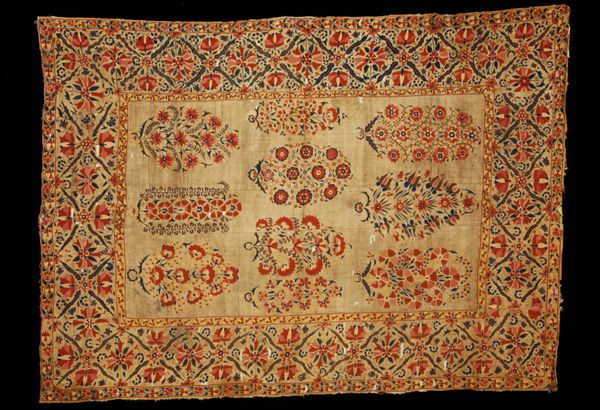
silver, gold, textile
#
natural stone pattern
#
wood texture
#
silver
#
gold
#
textile
#
geometric pattern
#
tile art
#
stoneware
#
wooden texture
#
intricate pattern
#
layered pattern
#
brown colour palette
#
motif
Dimensions: 26 x 26 in. (66.04 x 66 cm)
Copyright: Public Domain
Curator: Let's take a closer look at this intriguing "Cushion Cover," dating back to around the 19th century. It's part of the Minneapolis Institute of Art's collection. Editor: My first thought is 'sumptuous.' The dense, gold and silver embroidery against that rich, dark textile—it evokes a real sense of luxury. Curator: Absolutely. The materiality is crucial here. It appears to be crafted from fine textiles, possibly velvet or a similar pile fabric, then elaborately embroidered with metallic threads. The geometric and floral patterns are incredibly intricate, note how they play against the ground color. Editor: Considering it’s a cushion cover, how would that luxuriousness play out in the culture for which it was intended? Was this commonplace, or specifically designed for ceremonial use or for the upper class? Curator: It almost certainly would have been a signifier of wealth and status. Similar pieces from this period are often associated with noble or royal households in Central Asia or India, reflecting the high value placed on handcrafted textiles and the time investment required to produce them. Its use and visibility are undoubtedly political. Editor: Yes, there is a power in this intense design. Focusing on the piece itself, I find it hard to separate that material weight and texture from the emotional tone. The symmetry in the piece conveys not just wealth but the desire for order and calm. Curator: You make an astute point about symmetry, the balanced composition creates a visually harmonious and satisfying whole. If you closely observe the repeated motif that seems to build this up in a modular way, how does its layering help the work attain depth? Editor: Yes, by alternating gold and silver throughout this motif, that layering draws your eye deeper in, revealing more each time. Were these pieces made to follow trends? Was the layering a symbol in the cultures of the period? Curator: It's more about tradition here; certain patterns, materials, and techniques were passed down through generations. While stylistic changes occurred gradually, the core symbolic vocabulary remained fairly constant, reinforcing cultural identity and social hierarchies. Editor: What a rich, interwoven design in the most literal sense! It’s far more complicated than it originally seems. Curator: I agree. The surface initially attracts attention, but it's in the analysis of its underlying structures and the contexts in which these forms originate that the real richness lies.
Comments
No comments
Be the first to comment and join the conversation on the ultimate creative platform.
